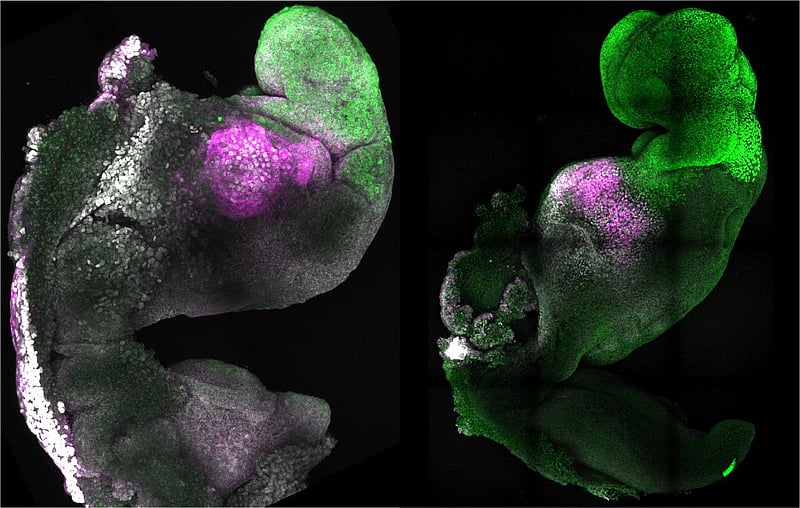2025 Holiday Hours
Closed: Nov 27 (Thu), Nov 30 (Sun), Dec 25 (Thu), Jan 1 (Thu)
Open: Nov 28 (Fri) 9am–6pm, Nov 29 (Sat) 9am–1pm, Dec 24 (Wed) 9am–2pm, Dec 31 (Wed) 9am–4pm
Recursos del Paciente
Manténgase sano!
Scientists Create Synthetic Mouse Embryo With Brain, Beating Heart
- August 26, 2022
- Steven Reinberg
- HealthDay Reporter

Using only mouse stem cells, British researchers report they have created synthetic embryos that form a brain, a beating heart and other organs.
The stem cells organized themselves until they developed beating hearts and the foundations of the brain and yolk sacs where the embryo gets nutrients in its first weeks.
Unlike other synthetic embryos, these stem cells reached a point where the whole brain began to develop. This is the most that has been achieved in any other stem cell mode, the scientists noted.
The research could help in understanding why some embryos fail while others go on to develop into a healthy pregnancy, and it might also be used to guide the repair and development of synthetic human organs for transplant.
"Our mouse embryo model not only develops a brain, but also a beating heart, all the components that go on to make up the body," said researcher Magdalena Zernicka-Goetz, a professor in mammalian development and stem cell biology at the University of Cambridge in England.
"It's just unbelievable that we've got this far," she said in a university news release. "This has been the dream of our community for years, and a major focus of our work for a decade, and finally we've done it."
For a human embryo to develop successfully, a dialogue is needed between the tissues that become the embryo and the tissues that connect the embryo to the mother. In the first weeks, three types of stem cells develop: one will become the tissues of the body and the other two support the embryo's development.
"So many pregnancies fail around this time before most women realize they are pregnant," Zernicka-Goetz explained. "This period is the foundation for everything else that follows in pregnancy. If it goes wrong, the pregnancy will fail.
"The stem cell embryo model is important because it gives us accessibility to the developing structure at a stage that is normally hidden from us, due to the implantation of the tiny embryo into the mother's womb," she said.
"This period of human life is so mysterious, so to be able to see how it happens in a dish -- to have access to these individual stem cells, to understand why so many pregnancies fail and how we might be able to prevent that from happening -- is quite special," said Zernicka-Goetz. "We looked at the dialogue that has to happen between the different types of stem cells at that time -- we've shown how it occurs and how it can go wrong."
Although the research was done in mouse models, the researchers are developing human models that could generate specific organ types to understand these crucial processes that are impossible to study in human embryos.
If these methods are successful with human stem cells, they could also be used to guide the development of synthetic organs for patients awaiting transplants, the researchers said.
"There are so many people around the world who wait for years for organ transplants," said Zernicka-Goetz. "What makes our work so exciting is that the knowledge coming out of it could be used to grow correct synthetic human organs to save lives that are currently lost. It should also be possible to affect and heal adult organs by using the knowledge we have on how they are made."
The report was published Aug. 25 in the journal Nature.
More information
For more on stem cells, head to the U.S. National Library of Medicine.
SOURCE: University of Cambridge, news release, Aug. 25, 2022

